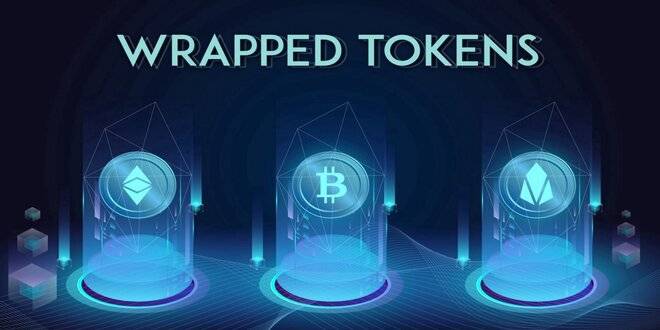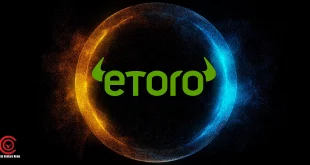There are stablecoins, altcoins, meme coins, and there are wrapped tokens like wrapped Bitcoin (WBTC), wrapped Ethereum (WETH), and also there is wrapped Dogecoin (WDOGE). It seems that almost every digital currency can be wrapped and they are crucial in the Defi space. So let us quickly have a look at what this wrapped token is and what are its advantages.
What Are Wrapped Tokens?
Before anything let us first see what is wrapped crypto. A wrapped token is a digital currency whose price is backed by the digital currency that it wraps. They exist to resolve problems surrounding the ability in the digital currency arena. For instance, we know BTC operates in its own network of blockchain, and cannot operate on ERC-20, which is the blockchain network that Ethereum offers as they are two completely varied networks with different protocols, and ERC – 20 operates in powering numerous DeFi projects. So to resolve this, developers have formulated a “copy” of BTC which is wrapped Bitcoin (WBTC) on the ERC – 20 networks.
Similar to the way the value of stable coins is backed to real life fiat currencies like the dollar, wrapped tokens obtain the value from the digital currency they are tied to, that is 1:1. This implies that the wrapped coin price of WBTC is the same as actual Bitcoin, the price of WETH is the same as actual Ethereum, and so on.
How Do Wrapped Tokens Operate?
To own a wrapped crypto, the user will first have to hold the original digital currency. As the wrapped token’s value is tied to the original token, it needs the user to have a custodian that grabs the same amount of money as the wrapped coins crypto. In the world of digital currency, a custodian implies an entity that provides services to secure the digital asset of an individual. This can be a wallet, a merchant, or even a digital currency exchange that offers storage services like Binance or Coinbase.
Let us assume that you wish to wrap 1 BTC to be used on a decentralized platform that is powered by Ethereum. So let us see how to create a wrapped token.
- The user will have to send a “wrapping request” for 1 Bitcoin to their custodian through their merchant.
- The user’s merchant takes over as a middle channel and executes two tasks that is sending 1 Bitcoin to the custodian for minting and then sending a wrapped coin request to the Decentralized Finance platform.
- The DeFi platform permits the request. The custodian mints 1 Wrapped Bitcoin because the user has sent 1 BTC.
- The custodian reveals 1 WBTC to the merchant, and the merchant reveals 1 WBTC to the user.
- The user can now trade 1 WBTC on the decentralized platform.
The whole process is carried out by smart contracts and is similar if you wish to unwrap your token which implies reversing your 1 Wrapped Bitcoin to Bitcoin. A burn request is sent by the merchant to the custodian that releases the real BTC back to the owners when they receive the permission.
Wrapping your crypto comes at a cost as there are several parties that are associated in the process so there are three types of fees that the user must pay which are the custodian fee, merchant fee, and the transaction fee.
There is one thing that all should note which is the Wrapped Bitcoin option available. Other blockchain protocols provide “wrapping services” to the holders of a digital currency where two notable are the Ren protocol and the pToken protocol. So if you ever see a coin like sBTC, rBTC, or pTokensBTC on a digital currency exchange or a decentralized platform, stay assured that it is a legit wrapped Bitcoin that is powered by varied protocols.
Benefits Of Wrapped Tokens
The greatest benefit of wrapped tokens is the increased operability and also fluidity they provide to their holders, especially those who use DeFi.
Using wrapped tokens, the users of DeFi can trade quicker and with lesser constraints adding liquidity in a domain where the value alterations take place swiftly and the user typically shifts their assets across several blockchains.
Wrapped token holders can also execute varied actions on the DeFi platforms that include yield farming and digital currency staking. Conducting transactions with wrapped tokens also happens at a lower cost compared to transferring the real token.
Disadvantages Of Wrapped Tokens
Like any other cryptocurrency, these tokens are prone to cyberattacks on the DeFi platforms where they are traded. Having your real digital currency handed over to an intermediary merchant also has a risk. Thus, you must do your due perseverance before seeking out the services from a merchant.
There are some who argue that wrapped tokens weaken decentralization, which is the very aim that creates the foundation of digital currency and blockchain. The idea that users have to reach out to third-party custodians to wrap tokens portrays that the process still depends on chosen institutions. Even Vitalik Buterin, who created Ethereum, voiced his concerns over this issue:
Even though wrapped tokens connect varied digital currencies on varied blockchains, some users may find the process of token wrapping a hassle. One has to travel to a merchant and a custodian, which implies potentially long wait times. Wrapped tokens pledge cheaper costs on the transaction, but the idea that a user still has to pay three varied fees for “unwrapping” and “wrapping” makes the process of minting costly.
The Bottom Line
Presently, wrapped tokens are the choice for anyone who wants to do cross-chain transactions. If you presently hold any a bit valuable digital currency, it probably already obtains a wrapped version of itself. Their formulation has also highly boosted the fame of DeFi and has allowed digital currency investors to raise their portfolios by staking these wrapped tokens to obtain a passive income. In this article, we have discussed the list of wrapped tokens as well.
- The Bitcoin Wallet Boom: Why Demand Is Skyrocketing - 25/11/2023
- How To Choose The Best Crypto Exchange Affiliate Programs - 03/03/2023
- Crypto License: How To Get It Now? - 03/02/2023
 Crypto Venture News One stop Crypto Track Down
Crypto Venture News One stop Crypto Track Down 






